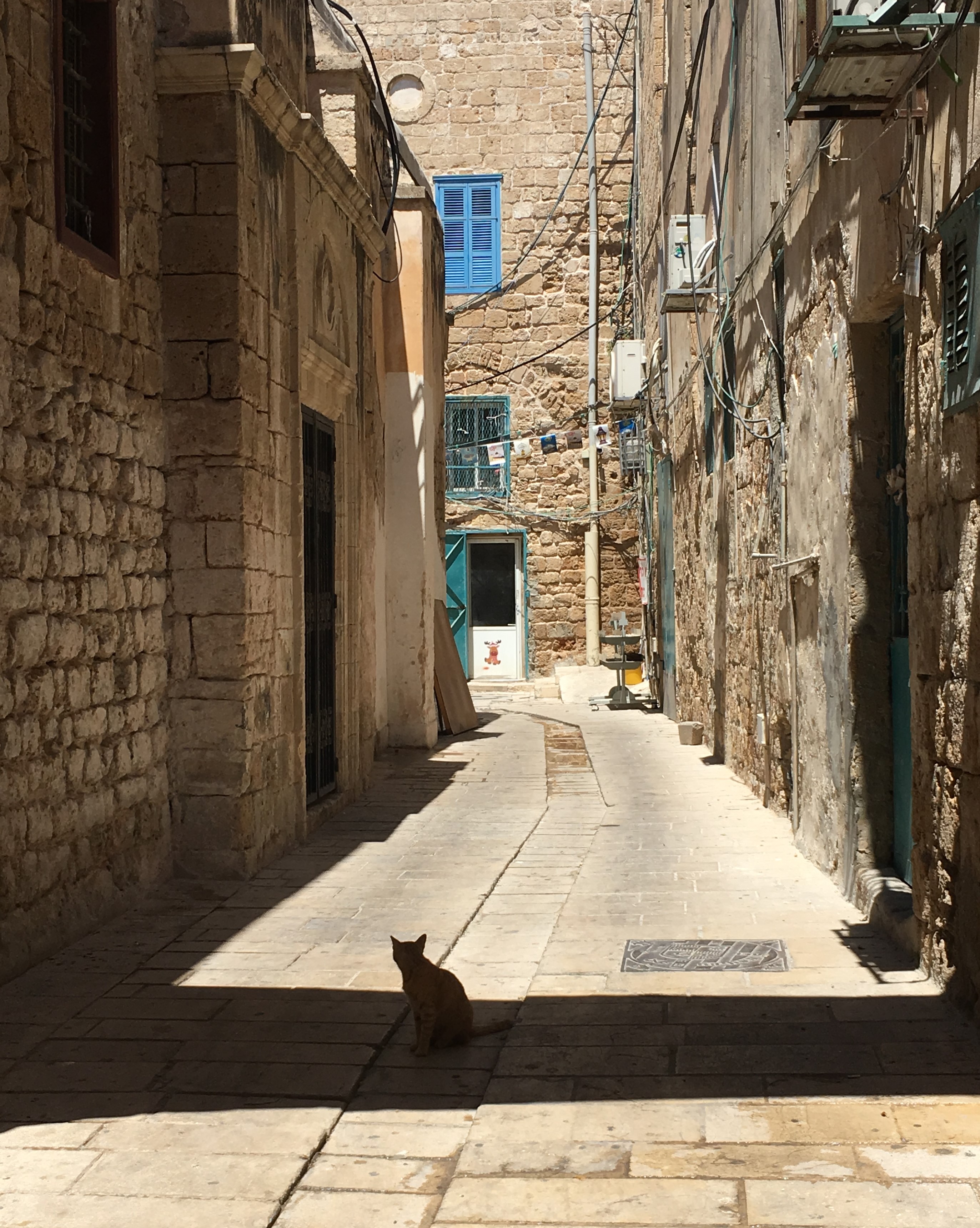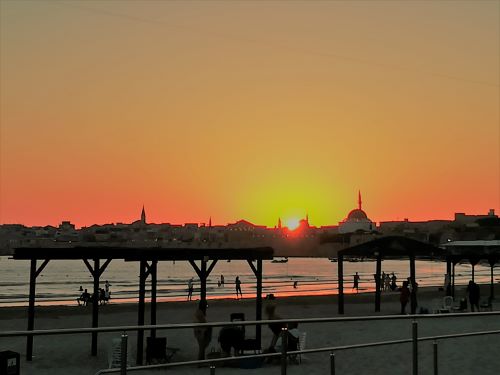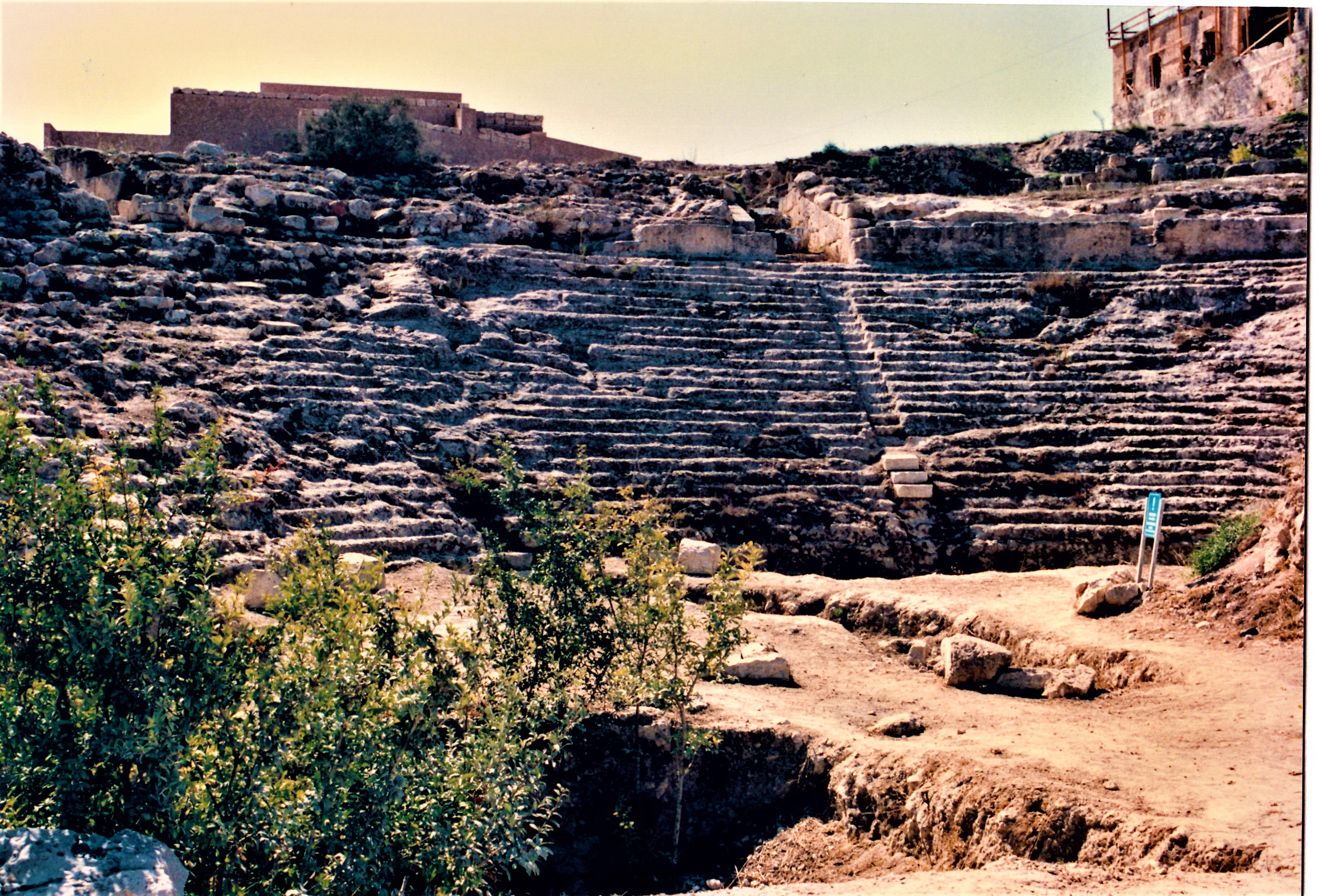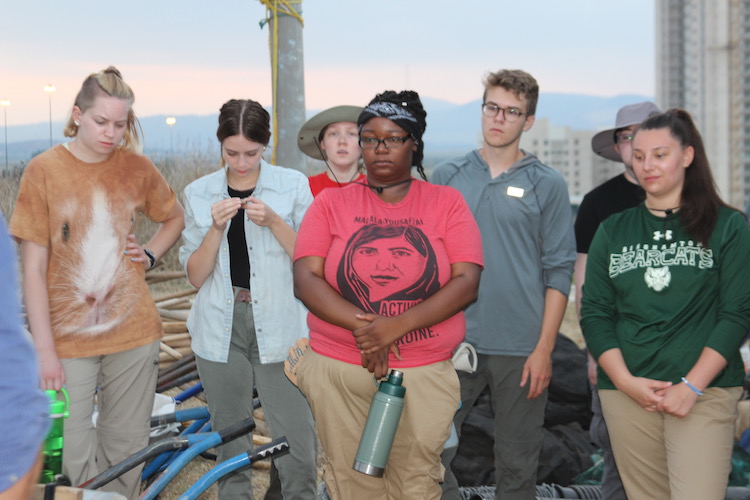By Emily Ratvaskay
By Emily Ratvaskay
Closing Thoughts
Introduction
My time at the Tel Akko field school was filled with a wide variety of experiences. Now, looking back I realize just how many fond memories of this trip I have.
On the Tel
The first day, I resolved to do all I could to help, although it was more of an automatic mindset than a conscious decision. Even with busywork, I tried to do my best. It may have been a waste of energy, but I suppose it paid off, as I became known as “the girl who is good at everything.” (Disclaimer: That certainly is not the case, I have many shortcomings and I have my limits.)
There were only two students in our square, Salem and myself. This was probably the best possible placement, as Salem and I have been friends since the beginning of freshman year. We made so many jokes, so many Vine references, so many puns, so much cringe – it was beautiful. We got on each other’s nerves a couple of times, but that is to be expected in such close quarters while being surrounded by a sea of burrowing bees.
Some of the most memorable moments and sayings from RR4, sifting, and making sandbags:
- “Gotta SWEEP SWEEP SWEEP!”
- *something falls*
- Person A: “There ‘e goes.”
- Person B: “Where ‘e goes, nobody knows.”
- Singing “Deliver Us” from the movie “Prince of Egypt”
- Daydreaming about food and sleep
- Listening to Steven Universe songs, and singing along
- Theorizing about the most recent Steven Universe episodes
- Person A: (monotone) “Screaming while screening.”
- Person B: (monotone) “Screening while screaming.”
- The bucket designated for bones we called the “Bone Boi Bucket”
- Larger chunks of bone we called “Big Bone Boi’s” a.k.a. “B.B.B.’s”
- Person A: (singing) “Mr. Sand-bag, bring me a bag”
- Person B: (singing) “bung, bung, bung, bung”
- Person A: (purposefully horrible singing) “Ocean man…”
- Person B: (also horrible singing) “…take me by the hand”
- Laughing at all of the cringe-worthy stuff we do and say
Our Square Supervisor, June, was awesome. She put up with all of our cringe, and, despite being a bit put-upon by all of the pottery buckets we would quickly fill, kept a good attitude. Our area supervisor, Nick, and his assistant, Mary, were really cool people as well. I had a great time working with them, and I wouldn’t hesitate to work with them again.
Despite, or maybe because of, our shenanigans, we made a lot of progress this season. Our square (RR4), was an utter mess when we got there, but by the end we had it completely level. We took out two partial walls, a surface, and a decent chunk of a pit filled with pottery sherds that looked restorable. There seemed to be some confusion over what was happening in our square.
- Is the surface associated with this wall or the other or neither?
- Is this a floor below the surface?
- If it is a floor, is it associated with this wall?
- What is up with all of this pottery?
- Is it pit or a layer that could indicate we are coming down on a floor?
- Is it associated with the pottery layer/pit found in RR3?
- Is this older pottery cutting into the newer pottery?
Not to mention all of the … interesting finds: The partial vessel I wrote about in my first post, a strange spout-like thing, an ear from a mask, a bronze earring or fish-hook, a small mug-like vessel, a lot of bone from a variety of animals, and a whole lot more. There would be days that we had to call Nick over several times because of all the weird stuff.
“Niiiick, there’s another thing…”
Off the Tel
Although it felt like the majority of the time we were on the Tel, looking back a lot more stuff happened off the Tel.
Food Struggles
At first, it was difficult to get used to the food routine at the Nautical College. Lunch was the big meal of the day, and usually the only one with meat, but no dairy. Breakfast and dinner were light and consisted of eggs, bread, chunks of assorted vegetables, and various dairy products. (Tel breakfast was awesome, though).
Some days Salem and I would go to the McDonald’s in the mall for dinner. Other days we would walk to My Market for a pint of ice cream and other snacks.
Food with Dr. R
Every Thursday, Dr. Rosenzweig (aka Dr. R) took the Miami group out for dinner (except the last week we did Wednesday since Uri Buri’s got moved up to Thursday). The first week we went to Café Neto, it is right on the beach and had some pretty good food. I loved the assortment of coffee and tea they had more than the food, though.
The second week we went to Kukushka, which is in the Turkish Bazaar. I had the cutest cat choose my lap as his seat. Literally, the best experience, even though I know the cat was just there to mooch off of my food.
We went to Abu Christo the third week. We sat outside, right next to the water. We saw the fast-boats zipping by, people jumping off a wall into the water, and the fish going after any little bit of food that was thrown over the railing. It was a really nice experience overall.
Our final Miami meal was at the Pisani Port Restaurant. Here we celebrated our last dinner, as well as Sam’s birthday. The food was good, the dessert was good, we were right on the water, and I think it was a good ending group dinner.
Akko Adventures
We wandered around the Old City a bit.
Salem and I got skirts from Wafa. Because of this, Salem soon came to realize just how indecisive a shopper I am.
Quinten, Salem, Tashe, and I went to Soul Burger and had one heck of a time attempting to figure out who ordered what, as it was all on one check, and the check was in Hebrew. The food was good though, and we saw three of the cutest kittens ever.
We went to Life Beach a few times, along with some others from our group to eat and be merry. I made sand castles and an impressive sand-sea turtle, whose shell was made of shells.
Salem, Sam, Tashe, myself, and some others from our group went on the fast boat one night. It isn’t the safest of boat-rides, but it makes for one epic roller coaster.
After the entire group finial dinner at Uri Buri’s, Quinten and I almost got lost on the way back to the Nautical College, because I insisted on cutting through the Turkish Bazaar, thinking it would be a more direct route than the one we took to get to Uri Buri’s.
Weekend Trips
Every Saturday we went on a field trip, occasionally Sundays too.
We wandered around the Galilee and the Golan the first Saturday. Visiting sites like Zippori, Magdala, “St. Peter’s house,” Capernaum, the Sea of Galilee, and Ancient Katzrin. Interesting sites all around, and interesting discussions of the pros and cons of reconstruction, who owns the past, and other ethical questions.
That first Sunday we went on a tour of crusader Akko.
The second Saturday we went to the Baha’i gardens in Akko, the Museum at Haifa, the Tanur and Gamel caves, and Caesarea. The Baha’i gardens were immaculate. The Tanur and Gamel caves gave us a bit of insight into paleoarchaeology and the history of it as a discipline. In Caesarea, we met with Beverly Goodman, a geoarchaeologist, an experience you can read more about in my second blog. We then saw the constructions that Herod made for Caesar, and the literal cover-up of “Area I”– a portion of Caesarea that was built during the Ottoman period and based on the Ottoman city layout.
The final trip was to Jerusalem. We visited the City of David, the Western Wall, all four quarters, the Jaffa gate, and the Israel Museum. There were interesting discussions of the current political/religious power of certain Jewish sects. The labyrinth-like streets, lined with vendors, and packed with passersby were lively but confusing.
Then the Sunday after, instead of going to the prison, as was planned, we went to the Al-Jazzar Mosque.
Pottery Washing, Sorting, & Writing
In between free time and lecture, there is a designated amount of time for washing the pottery that was unearthed. You could also opt for sorting pottery with Martha, writing on pottery with Rachel, doing floatation or heavy fraction with Dr. R, or washing bones with Justin.
I personally preferred the pottery-related options, as the most help was required there. Due to the incredible amounts of pottery that were taken out of the ground this season, there was an incredible backlog, on all levels.
I found the pottery washing to be sort of meditative, but it was easy for me to get lost in thought and end up scrubbing the same piece for much longer than needed. Sometimes it would get to be a bit mind-numbing.
Pottery sorting with Martha was probably my favorite thing to do. Sorting the body sherds from the diagnostic sherd and finding pieces that fit together I find to be quite an enjoyable task. Another perk is that I got to be inside with the AC blasting, drinking tea and listening to music or podcasts.
Pottery writing was fun as well, getting to be in the AC and drinking tea. However, I found that it took more concentration for me to write on the pottery than it took for me to sort out the pieces. Because of this, I limited myself to listening only to instrumental music, as I was afraid that I would accidentally write down what I was listening to.
Independent Study
During free time, I would work on my independent study. It was a comparison of archaeological illustration and photogrammetry as methods of recording artifacts. I just wish I had realized how much time I was wasting early on because I was in a rush to finish everything the last two or three days.
I got to learn real archaeological illustration techniques, which I am deeply thankful to Ragna for all of her guidance and patience with me. I am also thankful towards Rachel and Martha for their help in the archaeological illustration portion of my project.
For the photogrammetry portion, I am thankful to AJ for teaching me the basics and helping as much as she could. Despite the lack of good results from the Agisoft program in creating a 3D model of the figurine foot, I think I have enough information to build a good comparison.
Overall, I found it to be an enjoyable, if mildly stressful, experience.
Conclusion
I had an absolutely amazing time that the Tel Akko field school. Sure there were days where I would have much rather been at home, asleep, but I will probably never get another experience quite like this. I am glad I came on this trip, and, if it were possible, I wouldn’t mind returning someday.









